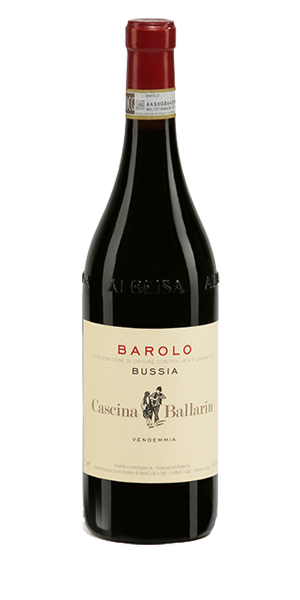Alberto Ballarin
Barolo Bussia 2016
ELEGANT FULL-BODIED RED
Barolo is produced in eleven ‘communes’ or village territories in the Langhe sub-region. Similar to the Grand Crus classification in Burgundy, Barolo producers have separated their holdings into individual vineyard lots and label the wines with specific geographic designations or menzioni. Unlike in Burgundy, Barolos crus are best thought of as districts, since the majority are too large to be viewed as just one vineyard or a cru site of limited size.
https://www.langhevini.it/wp-content/uploads/2019/07/MeGa-Barolo.pdf
Very broadly speaking, Nebbiolo vineyards on the eastern side of the Langhe sub-region are planted on soils formed during the Serravallian stage (Serravallian soils). These soils are sandstone-based, whitish-chalky beige in colour, characterised by sandy layers alternating with calcareous marl and limestone and rich in iron and phosphorous. The Barolos made on this side can show an austere character, intense body, power and structured tannins but they are the most ageworthy and are best approached ten years from the vintage. The western side, on the contrary, is home to soils partly formed during the Tortonian stage. Such soils have a bluish-gray colour and are made of calcareous marl mixed with sand. They are more fertile than Serravallian soils and are rich in magnesium and manganese. Readier to drink (as early as six years after the harvest), more feminine and approachable Barolos are made there.
The Bussia cru stands on the eastern side of the Langhe sub-region on Serravallian soils. It is one of the 11 crus of the township of Monforte d'Alba and it is historically renowned for great Barolos. It is placed north of the village of Monforte d’Alba. It is the biggest cru of the Langhe and has too many different exposures, microclimates, gradients, altitudes and soil types to be considered just one cru.
Cascina Ballarin's Bussia has always been a modern interpretation of Monforte's Barolo. This cru comes from a south facing 30-year-old vineyard at 250 metres a.s.l. on Serravallian soils, however, 26 months ageing in barriques make this wine very soft and approachable.
The grapes come from the vineyards in Monforte d'Alba (Bussia).
Altitude: 250 metres a.s.l.
Exposure: south
Vine training technique: guyot
Age of vines: 30 years
Yield per hectare: 55 quintals of grapes/ha
Soil: clay - limestone
The grapes are grown in the Bussia area of Monforte d’Alba where a calcareous, poor soil gives wines with great structure and intense aromas.The Bussia is one the most famous sub-denominations “Cru” of Barolo.
Piemonte produced excellent quality wine in 2016, with ripeness to match the very good 2015 but firmer tannin and higher acidity. It was a late harvest with perfectly ripe grapes. Yields were higher than average too. For many growers the 2016 is a vintage to remember. The 2016 Barolos are fresh with outstanding complexity and minerality, wines that have a great tension on the palate.
Harvest: October
Vinification: traditional in temperature controlled tanks
Ageing: 26 months in French oak barriques
Further ageing: 8 months in the bottle
Deep ruby red colour with very light orange reflections. Very intense bouquet, toasted and floral. The palate is impressively powerful with persistent tannins providing length and richness to the wine.
Barolo is made to be drunk with food and will often taste too acidic or tannic on its own. It goes particularly well with full-flavoured meat dishes like steak or with beef casseroles and game dishes such as venison and pheasant as the tannins will cut through the meat proteins.
Vintage: 2016
Grape: 100% Nebbiolo
Region: Piemonte
Winemaker: Giorgio and Gianni Viberti
Alcohol (ABV): 14%
